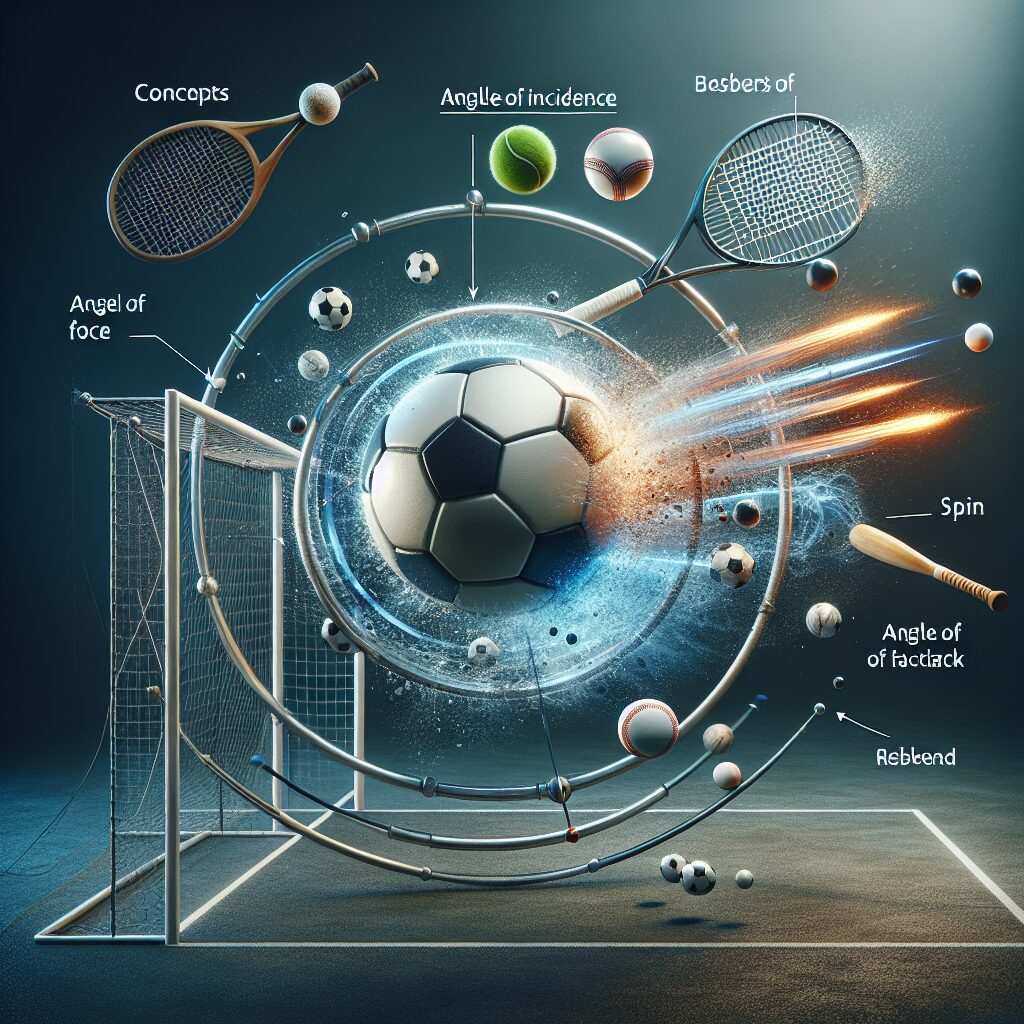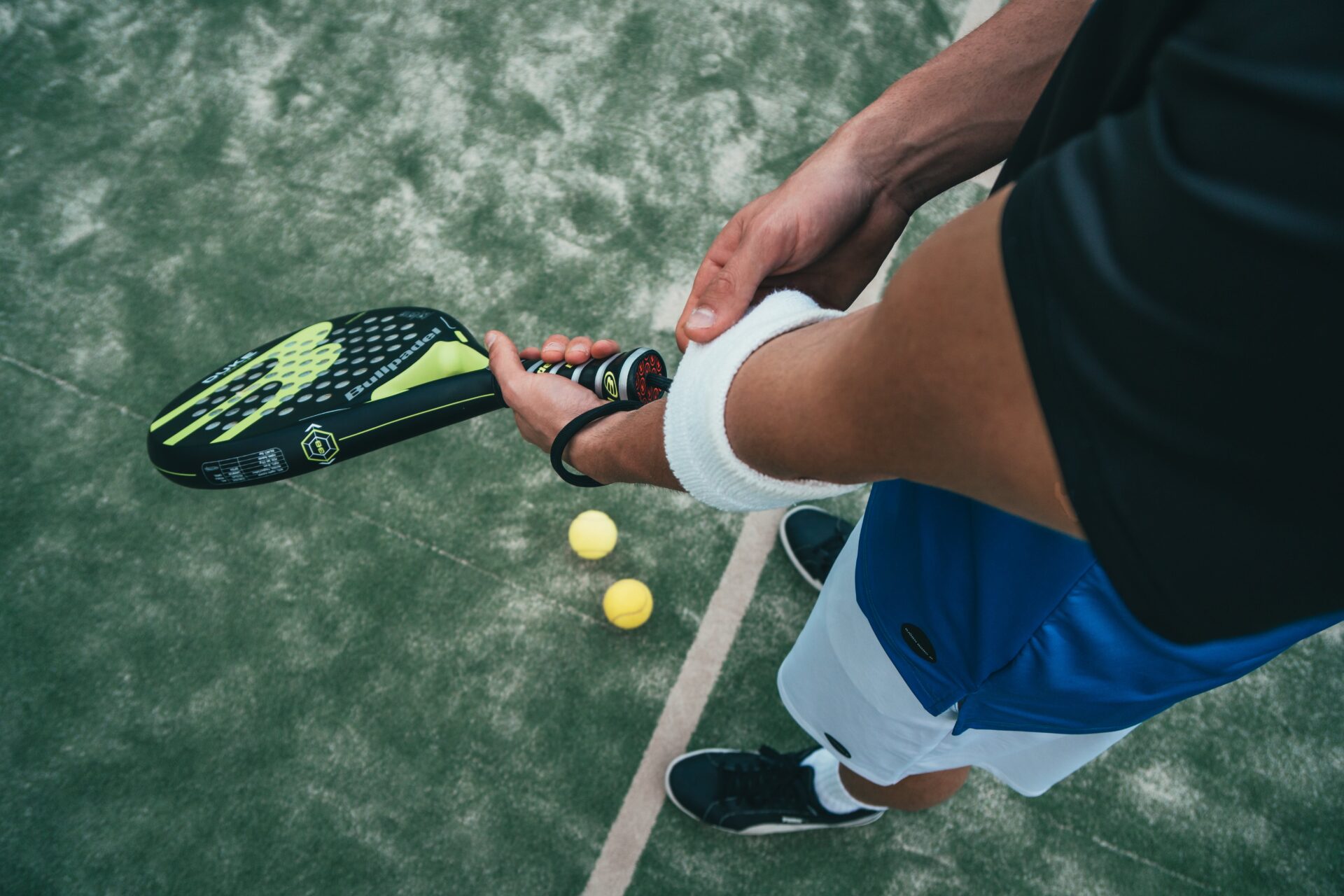The physics of ball impact in sports is a fascinating subject that delves into the intricacies of how a ball interacts with various surfaces and objects. Understanding the science behind ball impact not only helps athletes improve their performance but also allows scientists and engineers to develop innovative equipment and technologies. For example, did you know that the coefficient of restitution, which determines how bouncy a ball is, can significantly affect the outcome of a tennis match? In sports such as baseball, golf, soccer, and basketball, the physics of ball impact plays a crucial role in determining the trajectory, distance, and speed of the ball.
In addition to coefficient of restitution, there are numerous other factors that come into play when it comes to the physics of ball impact in sports. The surface characteristics of the playing field, the angle of impact, and the spin of the ball are just a few examples. For instance, in golf, the dimples on a golf ball create turbulence in the air, allowing the ball to travel further. Similarly, in soccer, the way a player strikes the ball can affect the bend or swerve, making it difficult for the goalkeeper to anticipate the trajectory.
Now that we have explored some fascinating insights into the physics of ball impact in sports, let’s delve deeper into the key takeaways of this article. We will discuss the influence of various factors, such as the composition of the ball, the angle of impact, and the surface characteristics on the outcome of a game. By understanding these key principles, athletes can enhance their skills, and scientists can continue to innovate in the field of sports equipment and technology. So, without further ado, let’s uncover the secrets behind the physics of ball impact in sports and its implications for players and enthusiasts alike.
Key Takeaways
1. The physics of ball impact in sports plays a crucial role in determining the outcome of a game or match, influencing factors such as trajectory, speed, spin, and energy transfer. Understanding these principles can provide athletes with a competitive edge and allow for more precise training and performance analysis.
2. The collision between the ball and the surface it impacts, known as the coefficient of restitution (COR), greatly influences ball behavior. It is a measure of the elasticity of the collision and affects how much kinetic energy is transferred. Sports like tennis and golf rely on specific COR values to optimize performance and game dynamics.
3. Projectile motion, involving the vertical and horizontal components of a ball’s motion, is essential in various sports. Understanding the concepts of launch angle, velocity, and distance allows players to calculate optimal trajectories and strategies, such as in basketball shooting or baseball pitching.
4. Spin, a critical element in sports like soccer, tennis, and table tennis, affects the ball’s path, flight, and bounce. Different types of spin, including topspin, backspin, and sidespin, influence the lift, drag, and Magnus effect, causing the ball to deviate and behave unpredictably. Knowing how to control and exploit spin can be a game-changer.
5. The equipment used in sports directly impacts the physics of ball impact. Factors such as ball construction, racquet strings, club face materials, and ball compression affect the ball’s performance characteristics, leading to variations in distance, accuracy, and control. Equipment optimization is therefore crucial for achieving desired outcomes and improving overall performance.
What is the Role of Physics in Ball Impact in Sports?
1. Understanding the Basics of Ball Impact
When a ball comes into contact with a surface or another object during sports, various factors affect the outcome. The study of the physics behind ball impact helps us comprehend the science behind these interactions. It involves analyzing parameters such as velocity, angle, material properties, and energy transfer.
2. Influence of Kinetic Energy
Kinetic energy refers to the energy possessed by a moving object. In ball sports, the magnitude of the kinetic energy at the moment of impact significantly impacts the trajectory and behavior of the ball. Understanding the principles of kinetic energy allows athletes and coaches to optimize their technique and enhance performance.
3. Implications of Newton’s Laws of Motion
Newton’s laws of motion play a fundamental role in explaining the physics of ball impact. The first law states that an object will remain at rest or in uniform motion unless acted upon by an external force. The second law relates the force applied to an object to its acceleration, while the third law describes the equal and opposite reaction exerted by the object.
4. Elasticity and Collisions
When a ball impacts a surface or another object, elastic potential energy comes into play. Elasticity determines the extent to which the ball deforms upon impact and subsequently regains its original shape. Understanding the principles of elasticity is crucial in predicting the rebound of the ball and optimizing techniques in various sports.
5. Factors Affecting Ball Impact
Multiple factors influence ball impact in sports. Some key considerations include the angle of incidence, surface material, air resistance, and spin. Each of these parameters affects the trajectory, bounce, and behavior of the ball upon impact. Analyzing these factors through a physics lens provides athletes with insights to improve their performance and strategize their gameplay.
6. Applications in Different Sports
The physics of ball impact has diverse applications across various sports. For instance, in basketball, understanding the impact angle and velocity can help players optimize their shooting techniques. Similarly, in tennis, analyzing the spin and surface interaction enables players to control the trajectory and accuracy of their shots. Apart from these, several other sports benefit from physics principles to refine gameplay strategies.
Guides and Tips for Optimizing Ball Impact in Sports:
- How can you increase the power and speed of your shot in soccer?
- What techniques can be employed in baseball to increase the distance the ball travels upon impact?
- How does altering the angle of impact affect the rebound of a basketball?
- What role does spin play in controlling the trajectory of a table tennis ball?
- How can the properties of different playing surfaces impact the behavior of a golf ball?
Frequently Asked Questions
What is the physics behind ball impact in sports?
Ball impact in sports is governed by the laws of physics, specifically the principles of momentum, force, and elasticity. When a ball collides with a racket or any other sporting equipment, the force and momentum exerted on the ball determine its direction and speed. Additionally, the elasticity of the ball and the surface it impacts play a significant role in determining the outcome of the impact.
Why is understanding the physics of ball impact important in sports?
Understanding the physics of ball impact provides athletes with valuable insights into how to maximize their performance and improve their technique. By comprehending the factors that influence a ball’s trajectory, athletes can adjust their movements, equipment, and strategies to gain a competitive edge. It also allows coaches and trainers to develop more effective training programs based on scientific principles.
How does the velocity of the ball impact its trajectory?
The velocity of the ball greatly affects its trajectory. According to the laws of physics, the greater the initial velocity of a ball, the farther it will travel before reaching the ground or another surface. Higher velocities also result in a flatter trajectory, making the ball travel in a straighter path. Conversely, slower velocities tend to produce steeper trajectories with shorter distances.
What role does mass play in ball impact?
The mass of the ball influences the force that can be exerted during impact. Heavier balls tend to transfer more momentum upon collision, potentially generating more power and distance. However, the mass is not the sole determining factor, as other variables, such as elasticity and the surface in contact, can mitigate the effects of mass to some extent.
How does the type of surface affect ball impact?
The type of surface the ball impacts affects its bounce, speed, and direction. Different surfaces have varying degrees of elasticity, which influence how much energy is transferred during the impact. For example, a ball hitting a hard surface like concrete will experience less deformation and bounce back faster compared to hitting a softer surface such as grass.
What impact does the angle of impact have on the ball?
The angle of impact plays a crucial role in determining the trajectory and direction of the ball after impact. When a ball hits a surface at a perpendicular angle, it typically reflects back at a similar angle. However, if the angle of impact is oblique, the ball may deflect or change its trajectory, leading to different outcomes.
Is there a relationship between the elasticity of the ball and ball impact?
Yes, the elasticity of the ball directly affects the impact. An elastic ball will deform upon impact and store some of the energy, later releasing it as it returns to its original shape. This bouncing back property allows the ball to travel longer distances and generate more speed. In contrast, a less elastic ball will absorb more of the energy during impact, resulting in lower velocities and shorter distances.
How does air resistance impact ball trajectory?
Air resistance acts as a force that opposes the motion of the ball, particularly at higher velocities. It can cause the ball to experience drag, affecting its trajectory and speed. The impact of air resistance varies depending on the size, shape, and surface properties of the ball. Sports with smaller and denser balls, such as golf or baseball, may experience less air resistance compared to sports involving larger and lighter balls, like soccer or tennis.
Are there any strategies to optimize ball impact in sports?
Athletes can employ various strategies to optimize ball impact in sports. Understanding the physics involved allows athletes to adjust their technique, body positioning, and swing to maximize the force and momentum transmitted to the ball. It is essential to consider factors such as the angle of impact, surface properties, and equipment used to ensure optimal outcomes during ball interaction in sports.
How can athletes use the physics of ball impact to their advantage?
By leveraging the physics of ball impact, athletes can enhance their performance in sports. Through careful analysis and practical application of the principles governing ball impact, athletes can improve their accuracy, power, and control. They can also strategize and adapt their gameplay based on the physical properties of the ball and its interaction with the sporting equipment and environment.
Final Thoughts
The physics of ball impact in sports is a fascinating subject that unveils the intricate relationship between scientific principles and athletic performance. Through understanding the forces at play, athletes can gain valuable insights to enhance their technique, develop more effective training methods, and optimize their strategy for achieving outstanding results.
Moreover, the study of ball impact physics provides a foundation for innovation and technological advancements in sports equipment. By constantly pushing the boundaries of scientific knowledge, researchers and engineers can design cutting-edge gear that enhances performance, reduces injuries, and revolutionizes the way we engage with sports. As our understanding of the physics behind ball impact deepens, so does our ability to unlock the full potential of athletes and push the limits of human achievement in sports.




